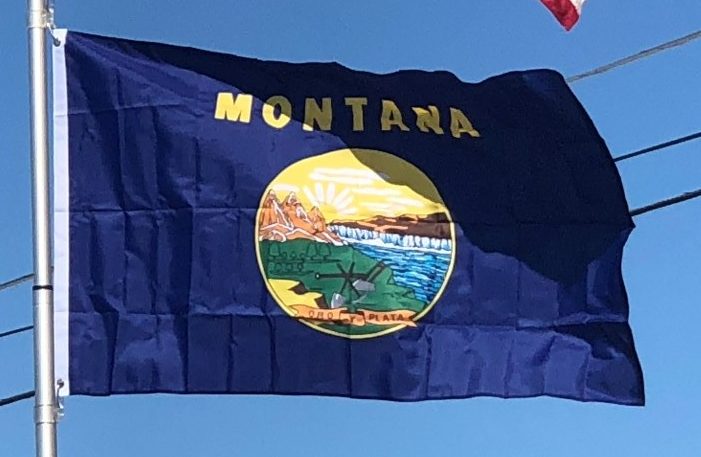The Desert Land Act of 1877 was passed to allow settlement of arid lands in the west and allotted 640 acres to settlers for a fee of $.25 per acre and a promise to irrigate the land. After three years, a fee of one dollar per acre would be paid and the land would be owned by the settler. This act brought mostly cattle and sheep ranchers into Montana, many of whom grazed their herds on the Montana prairie for three years, did little to irrigate the land and then abandoned it without paying the final fees. Some farmers came with the arrival of the Great Northern and Northern Pacific Railroads throughout the 1880s and 1890s, though in relatively small numbers.

In the early 1900s, James J. Hill of the Great Northern began promoting settlement in the Montana prairie to fill his trains with settlers and goods. Other railroads followed suit. In 1902, the Reclamation Act was passed, allowing irrigation projects to be built in Montana’s eastern river valleys. In 1909, Congress passed the Enlarged Homestead Act that expanded the amount of free land from 160 to 320 acres per family and in 1912 reduced the time to “prove up” on a claim to three years. In 1916, the Stock-Raising Homestead Act allowed homesteads of 640 acres in areas unsuitable for irrigation. This combination of advertising and changes in the Homestead Act drew tens of thousands of homesteaders, lured by free land, with World War I bringing particularly high wheat prices. In addition, Montana was going through a temporary period of higher-than-average precipitation.

However, farmers faced a number of problems. Massive debt was one. Also, most settlers were from wetter regions, unprepared for the dry climate, lack of trees, and scarce water resources. In addition, small homesteads of fewer than 320 acres were unsuited to the environment. Weather and agricultural conditions are much harsher and drier west of the 100th meridian. Then, the droughts of 1917–1921 proved devastating. Many people left, and half the banks in the state went bankrupt as a result of providing mortgages that could not be repaid. As a result, farm sizes increased while the number of farms decreased.
By 1910, homesteaders filed claims on over five million acres, and by 1923, over 93 million acres were farmed. In 1910, the Great Falls land office alone saw over 1,000 homestead filings per month, and the peak of 1917– 1918 saw 14,000 new homesteads each year. But a significant drop occurred following drought in 1919.
Montana and World War I:
In 1917–18, due to a miscalculation of Montana’s population, approximately 40,000 Montanans, ten percent of the state’s population, either volunteered or were drafted into the armed forces. This represented a manpower contribution to the war that was 25 percent higher than any other state on a per capita basis. The war created a boom for Montana mining, lumber and farming interests as demand for war materials and food increased.
Depression Era:
An economic depression began in Montana after World War I and lasted through the Great Depression until the beginning of World War II. This caused great hardship for farmers, ranchers, and miners. The wheat farms in eastern Montana make the state a major producer; the wheat has a relatively high protein content and thus commands premium prices.
Montana and World War II:
When the U.S. entered World War II on December 7, 1941, many Montanans already had enlisted in the military to escape the poor national economy of the previous decade. Another 40,000-plus Montanans entered the armed forces in the first year following the declaration of war, and over 57,000 joined up before the war ended. These numbers constituted about 10 percent of the state’s total population, and Montana again contributed one of the highest numbers of soldiers per capita of any state.
